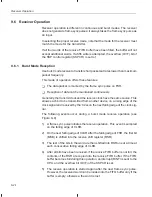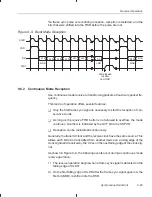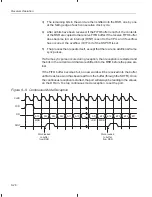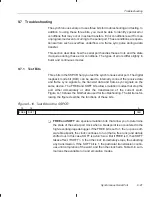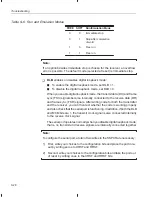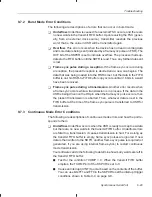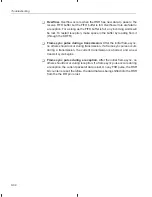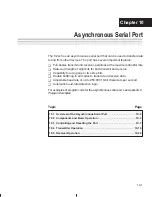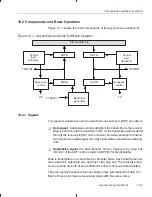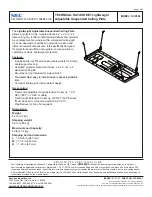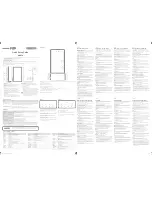
Controlling and Resetting the Port
10-8
Bits 12–10
Reserved. Always read as 0s.
Bit 9
DIM — Delta interrupt mask. DIM selects whether or not delta interrupts
are asserted on the TXRXINT interrupt line. A delta interrupt is generated by
a change on one of the general-purpose I/O pins (IO3, IO2, IO1, or IO0).
DIM = 0
Disables delta interrupts.
DIM = 1
Enables delta interrupts.
Bit 8
TIM — Transmit interrupt mask. TIM selects whether transmit interrupts
are asserted on the TXRXINT interrupt line. A transmit interrupt is generated
by THRE (transmit register empty indicator in the IOSR) when the transmit
register (ADTR) empties.
TIM = 0
Disables transmit interrupts.
TIM = 1
Enables transmit interrupts.
Bit 7
RIM — Receive interrupt mask. RIM selects whether receive interrupts are
asserted on the TXRXINT interrupt line. A receive interrupt is generated by
one of these indicators in the IOSR: BI (break interrupt), FE (framing error),
OE (overflow error), or DR (data ready).
RIM = 0
Disables receive interrupts.
RIM = 1
Enables receiver interrupts.
Bit 6
STB — Stop bit selector. STB selects the number of stop bits used in trans-
mission and reception.
STB = 0
One stop bit is used in transmission and reception. This is
the default value at reset.
STB = 1
Two stop bits are used in transmission and reception.
Bit 5
CAD — Calibrate
A detect bit. CAD is used to enable and disable automatic
baud-rate alignment (auto-baud alignment).
CAD = 0
Disables auto-baud alignment.
CAD = 1
Enables auto-baud alignment.
Bit 4
SETBRK — Set break bit. Selects the output level of TX when the port is
not transmitting.
SETBRK = 0
The TX output is forced high when the port is not
transmitting.
SETBRK = 1
The TX output is forced low when the port is not
transmitting.

